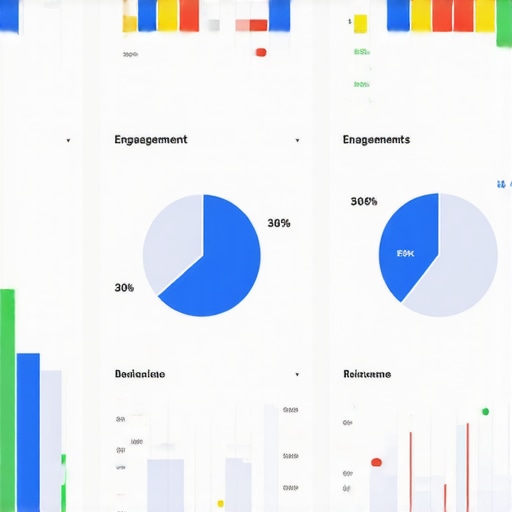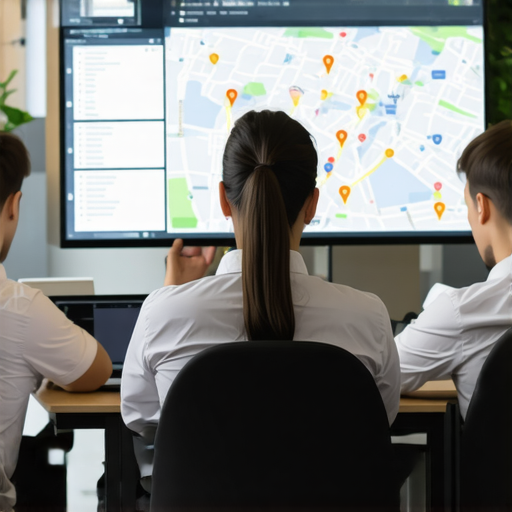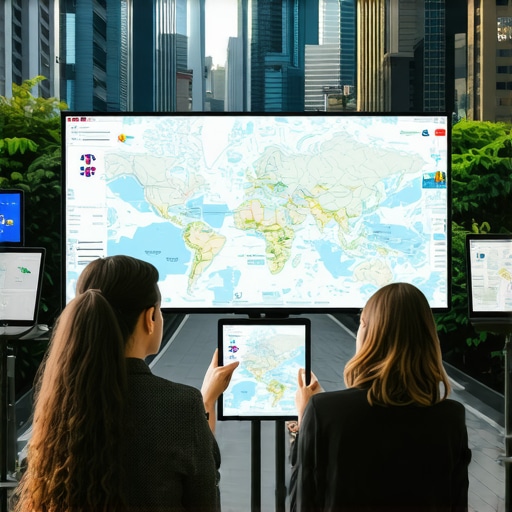How I Discovered the Power of Map SEO in My Business Growth
Just a few months ago, I was struggling to get my local business noticed on Google Maps. Despite offering excellent services, my visibility was minimal, and potential customers were passing right by me. It was then that I decided to dive into the world of Map SEO—a game-changer I hadn’t fully appreciated before. Through trial, error, and a lot of research, I began implementing top Google Maps visibility strategies recommended by experts, and the results were remarkable.
My Personal Insights into Effective Map Optimization
One of the first things I learned is that Google My Business (GMB) optimization is crucial. Ensuring my profile was complete, accurate, and engaging made a significant difference. I also focused on local citations and managing reviews because I understood that these factors influence local rankings. Over time, I saw my business move from obscurity to the coveted top spots on Google Maps, which directly increased my foot traffic and sales.
What Are the Key Elements That Boost Maps Visibility?
From my experience, the best Google Maps agency tips include optimizing your business name, categories, and description to reflect what customers are searching for. Incorporating relevant keywords naturally into your GMB profile and posts helps Google understand your business better. I also found that regularly posting updates and responding to reviews fostered trust and engagement, further improving my rankings. For more detailed tactics, I recommend exploring these expert tips.
Why Do I Believe Consistency Is the Secret to Long-Term Success?
Consistency in managing your online presence is something I’ve come to value deeply. Regularly updating your Google My Business profile, posting fresh content, and encouraging reviews build a strong, trustworthy local profile. It’s like nurturing a garden—you need to tend to it consistently. This ongoing effort helped my business stay visible even as competitors tried to catch up. According to reputable sources like Moz, consistent local SEO practices are vital for maintaining high rankings.
How Can You Keep Your Map SEO Strategy Fresh and Effective?
Staying updated with the latest Google algorithms and local SEO trends is essential. I often read industry blogs and participate in forums to learn new tactics. Sharing your experiences or asking questions about what’s working can be incredibly beneficial. Remember, SEO isn’t a one-time effort; it’s an ongoing journey that requires adaptation and dedication.
If you’re looking for a solid starting point, consider exploring professional GMB optimization strategies. And I’d love to hear your own experiences—feel free to comment below and share what’s worked for you!
Are You Overlooking These Critical Elements in Your Map SEO Strategy?
While many local businesses focus on basic GMB optimization, seasoned experts recognize that nuanced tactics can significantly elevate your Google Maps rankings. For instance, integrating structured data markup into your website can enhance Google’s understanding of your business details, thereby influencing your local pack visibility. According to Moz, leveraging schema markup for local businesses can improve click-through rates and rankings by providing search engines with precise information about your services, hours, and location (Moz Schema Guide).
How Can Visual Content and User Engagement Amplify Your Map Presence?
Visual content like high-quality photos and videos not only attract potential customers but also signal activity and relevance to Google. Regularly updating images and encouraging satisfied customers to share their experiences can create a vibrant profile that stands out. Engaging with reviews by responding thoughtfully demonstrates your commitment to customer satisfaction and can sway local rankings positively. Remember, Google considers user engagement signals—such as review responses and photo uploads—as indicators of a lively, trustworthy listing.
What Are the Most Overlooked Local Signals That Influence Rankings?
Beyond citations and reviews, factors like behavioral signals—clicks, calls, and direction requests—play a pivotal role. Google tracks how users interact with your listing; increased engagement often correlates with higher visibility. To boost these signals, implement strategic call-to-actions and track performance metrics through Google Analytics and GMB insights. This approach allows you to refine your local SEO efforts based on real user behaviors.
How Do Local Backlinks and Niche Citations Impact Your Map Rankings?
Acquiring high-quality backlinks from local industry associations or community websites reinforces your authority within the neighborhood. Similarly, niche-specific citations—mentions on local directories relevant to your industry—can enhance relevance and trustworthiness. According to Search Engine Journal, building authoritative local backlinks remains one of the most effective tactics for improving maps rankings (Search Engine Journal on Local Backlinks).
If you’re eager to deepen your understanding of these tactics, I recommend exploring top strategies by Google Maps experts. And, if you’ve tested your own map SEO techniques, share your experiences below—I’d love to hear what’s working in your local market!
What Are the Hidden Layers of Map SEO That Could Elevate Your Business?
As I delved deeper into the nuances of Google Maps visibility, I realized that many small adjustments can have outsized impacts—like the subtle art of schema markup, which many overlook. Implementing local business schema on my website helped Google associate my profile more accurately with local searches, leading to better rankings and increased click-through rates. According to Moz, structured data markup can significantly enhance your local listings’ prominence by providing search engines with detailed, context-rich information (Moz Schema Guide).
How Do Behavioral Signals and User Intent Shape Map Rankings?
One insight I wish I grasped earlier is the importance of behavioral signals, such as clicks, calls, and directions. Google interprets these actions as indicators of relevance and trustworthiness. To capitalize on this, I started adding compelling call-to-actions in my GMB posts and ensuring my contact info was prominent. Over time, I noticed an uptick in direct interactions, which correlated with improved rankings. This phenomenon isn’t accidental; it underscores the importance of understanding user intent and facilitating seamless engagement. For a more comprehensive approach, I explored strategies outlined in this guide on boosting local map visibility.
How Can I Leverage Niche Citations and Local Backlinks Effectively?
Building authoritative backlinks from local organizations, industry-specific directories, and community websites has been a game-changer. I focused on acquiring citations that were relevant and trusted within my niche to enhance my profile’s relevance. Engaging with local chambers of commerce or industry associations not only provided backlinks but also increased my business’s credibility. Search Engine Journal emphasizes that high-quality local backlinks are among the most effective tactics for improving map rankings (Search Engine Journal on Local Backlinks).
In my experience, a balanced approach that combines these backlinks with consistent review management and content updates creates a resilient, high-ranking profile. If you’re eager to explore these tactics further, check out top strategies by Google Maps experts. And I invite you—what unique tactics have you found effective in your local SEO journey? Share your stories in the comments below!
Unlocking the Hidden Potential of Advanced Map SEO Techniques
As my journey into local SEO deepened, I began exploring sophisticated strategies that transcend basic optimization, revealing a landscape rich with untapped opportunities. One such tactic involves leveraging structured data markup—a nuanced layer of SEO that many overlook but can dramatically enhance your visibility on Google Maps. By implementing local business schema, I was able to provide Google with precise, structured details about my services, hours, and geographic scope, which translated into more prominent listings and higher click-through rates. According to Moz, schema markup is a cornerstone for sophisticated local SEO that warrants dedicated attention.
Can Behavioral Signals and User Intent Be Mastered for Superior Rankings?
Understanding the subtle art of behavioral signals—such as click-through rates, call actions, and routing requests—has been pivotal in my advanced SEO strategy. These signals act as real-time indicators of relevance to Google, providing feedback loops that influence ranking algorithms. I optimized my profile by adding compelling calls-to-action within GMB posts, making it effortless for users to engage. This proactive approach led to a noticeable increase in direct interactions, which Google rewarded with improved rankings. To truly master this, I recommend exploring these proven techniques that align user behavior with your local SEO efforts.

Visualize the impact of behavioral signals with a screenshot of Google My Business analytics dashboard showing increased user interactions.
What Role Do Niche Citations and Local Backlinks Play in an Advanced Strategy?
In my experience, cultivating high-quality backlinks from industry-specific directories and local authority sites remains a pillar of advanced Map SEO. Engaging with niche communities—such as local chambers of commerce or industry associations—not only provided authoritative backlinks but also enhanced my profile’s relevance within my sector. This dual approach of backlinks and citations creates a robust ecosystem that signals trustworthiness and expertise to Google. As Search Engine Journal highlights, strategic backlink acquisition is integral to climbing the local search ladder, especially when combined with schema enhancements and behavioral optimization.
How Can Continuous Data Analysis and Iterative Testing Elevate Your Map Rankings?
One of the most enlightening aspects of my advanced SEO journey has been embracing data-driven decision-making. Regularly analyzing metrics from Google Analytics, GMB insights, and heatmaps allowed me to identify patterns and refine my strategies dynamically. For example, I tested different call-to-actions and content formats, observing their direct impact on engagement and rankings. This iterative process—akin to scientific experimentation—ensures that your tactics stay aligned with evolving algorithms and user preferences. For anyone serious about sustained success, I recommend exploring tools and methodologies outlined in these expert strategies that emphasize continuous optimization.
Things I Wish I Knew Earlier (or You Might Find Surprising)
The Power of Consistency
One of the most unexpected lessons I learned is that consistent efforts in managing your Google My Business profile can lead to long-term success. When I first started, I underestimated how crucial regular updates, review responses, and fresh photos were. Over time, I realized that this ongoing engagement built trust with both Google and my customers, pushing my business higher in local searches.
The Impact of Visual Content
Initially, I thought text optimization alone would suffice. But adding high-quality photos and videos made a noticeable difference. Customers are more likely to choose a business with vibrant visuals, and Google favors active, visually appealing profiles. I started dedicating time to update images frequently, which helped my profile stand out.
The Subtle Art of Schema Markup
I was surprised to discover how implementing structured data markup on my website could boost my map rankings. It’s like giving Google a clear roadmap of my business details, making my listing more relevant and prominent. This small tweak paid off significantly in increased visibility and click-through rates.
Understanding Behavioral Signals
Clicks, calls, and directions requests are more than just interactions—they’re signals Google uses to judge relevance. I began focusing on clear call-to-actions and easy contact options, which led to more user engagement and improved rankings. Recognizing this connection was a game-changer for my local SEO approach.
The Value of Local Backlinks and Niche Citations
Building backlinks from local industry websites and niche directories has been vital. These links not only enhance your authority but also reinforce your relevance in your community. I made efforts to engage with local chambers and industry groups, which resulted in valuable citations and backlinks that elevated my position on Maps.
Resources I’ve Come to Trust Over Time
- Moz: Their comprehensive guides on schema markup and local SEO strategies have deeply influenced my understanding. It’s a trustworthy source I recommend to anyone serious about Map SEO.
- Search Engine Journal: Their articles on local backlinks and citations provided actionable tactics that I’ve successfully implemented. It’s a go-to for staying updated.
- Google’s Official Blog & Help Center: Staying aligned with Google’s latest updates and best practices has been essential. I check these resources regularly to keep my strategy current.
Parting Thoughts from My Perspective
Reflecting on my journey with Google Maps SEO, I realize that the most valuable insights come from consistent effort, visual storytelling, and understanding the subtle signals that influence rankings. While the landscape evolves, these foundational tactics remain effective. If you’re looking to boost your local visibility, start small, stay consistent, and keep learning. And if this resonated with you, I’d love to hear your thoughts or experiences. Feel free to share in the comments or pass it along to someone who might find it helpful. Remember, every small step counts toward building a strong local presence!

